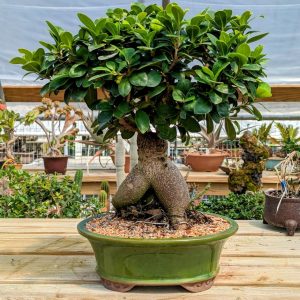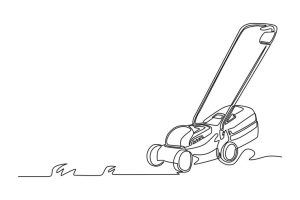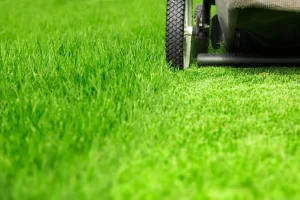Imagine stepping into your backyard and being greeted by the lush greenery of your very own greenhouse. It’s a sanctuary where plants thrive and your gardening skills flourish, regardless of the season.
But how do you turn this dream into reality? Starting a greenhouse might seem daunting, but it’s simpler than you think. With the right guidance, you can cultivate a vibrant ecosystem right at home. You’re about to discover practical steps and insights that will help you kickstart your greenhouse journey.
This article will equip you with the essential knowledge to transform your gardening aspirations into a thriving oasis. Keep reading to uncover the secrets of building and nurturing your perfect greenhouse.

Credit: sturdi-builtwebstore.com
Choosing The Right Location
Selecting an ideal spot ensures your greenhouse thrives. Prioritize sunlight exposure, wind protection, and drainage. Aim for easy access to water and electricity.
Choosing the right location for your greenhouse is a crucial step that can determine its success. You want to create an environment where plants thrive and grow effortlessly. But how do you ensure you’ve picked the perfect spot? Let’s dive into the key factors you need to consider.Assessing Sunlight And Shade
Begin by observing the sun’s path across your property. Ideally, your greenhouse should receive ample sunlight throughout the day, as this is essential for plant growth. Consider seasonal changes; what might be sunny in summer could be shaded in winter. A spot that captures at least six hours of sunlight daily can be a good choice. If you notice obstructions like trees or buildings casting shadows, it might be worth adjusting the placement. Have you ever noticed how plants lean towards the light? This natural inclination can be harnessed with the right location.Considering Wind Protection
Wind can be both a friend and foe to your greenhouse. While good airflow is beneficial, strong winds can wreak havoc on the structure and temperature control. Position your greenhouse near natural windbreaks like hedges or fences. You might even consider planting shrubs or trees strategically to shield against harsh gusts. Reflect on past storms; were there areas on your property that seemed more protected? That insight can guide your decision and save future headaches.Evaluating Soil Quality
Healthy soil is the foundation of any thriving garden. Test the soil quality where you plan to establish your greenhouse. Look for nutrient-rich, well-drained soil. If the soil seems poor, you may need to amend it or consider raised beds. Have you ever dug into the earth only to find it dry and lifeless? That’s a clear sign you need to improve the soil before planting. Wouldn’t it be frustrating to nurture plants only to see them struggle? Quality soil can make all the difference. Choosing the right location involves a careful balance of these elements. What insights have you gained from your gardening experiences that might influence your choice?
Credit: greenhouseemporium.com
Selecting The Greenhouse Type
Choosing the right greenhouse type is crucial for a successful start. Consider the climate and space available. Make sure it suits your budget and growing needs.
Selecting the right greenhouse type is a crucial step in ensuring your gardening success. It’s not just about aesthetics; the structure you choose will determine how effectively you can grow plants year-round. So, how do you decide which type of greenhouse is right for you? Let’s delve into the options.Exploring Different Structures
Greenhouses come in various shapes and sizes, each serving different needs. A-frame greenhouses are perfect for smaller spaces and have a classic look. Lean-to greenhouses attach to your home, sharing a wall, which can save on construction costs and provide easy access. Geodesic domes are eye-catching and excellent for air circulation but may require more expertise to build. What about the traditional hoop house? It’s simple and budget-friendly, ideal for first-timers. Choose a structure that fits your space, climate, and gardening goals.Materials And Durability
The material of your greenhouse plays a significant role in its longevity and effectiveness. Glass offers excellent light transmission and a beautiful aesthetic but can be costly and fragile. Polycarbonate panels are durable, provide good insulation, and resist shattering, making them a popular choice for many gardeners. If you’re seeking a budget-friendly option, plastic film might be the way to go. However, it may require more frequent replacements. Consider your local weather conditions and how each material will withstand them. Will it hold up in a windy area? Is it suitable for heavy snow loads?Budget Considerations
Your budget will heavily influence your greenhouse choice. While a glass greenhouse might be the dream, it comes with a higher price tag. Polycarbonate options offer a middle ground, balancing cost and durability. For those on a tight budget, DIY kits or simple hoop houses provide a practical solution. Think about not just the initial setup cost, but also the long-term maintenance expenses. Are you prepared to invest in a more durable structure now to save on future repairs? Choosing the right greenhouse involves balancing your desires with practicality. What type of gardener do you aspire to be, and how can your greenhouse help you achieve that vision?Planning The Layout
Designing the greenhouse layout is crucial for efficient space use and plant growth. Consider sunlight, ventilation, and access paths to optimize plant health. Strategic planning ensures easy maintenance and maximizes productivity.
Planning the layout of your greenhouse is crucial for success. A well-organized space enhances plant growth and eases maintenance. Let’s explore the key elements to consider when planning your greenhouse layout.Space Utilization
Efficient space utilization maximizes plant growth. Choose vertical gardening for limited space. Use shelves or trellises to grow plants upward. This method increases plant diversity without crowding. Plan the arrangement for different plant sizes. Larger plants need more space, while smaller ones can fit closer together.Accessibility And Pathways
Accessibility ensures easy movement within the greenhouse. Design pathways wide enough for comfortable walking. Leave room for tools and wheelbarrows. Organize plants to avoid blocking paths. Clear pathways prevent accidents and allow quick plant care. Consider raised beds to improve accessibility and reduce bending.Ventilation And Air Circulation
Proper ventilation and air circulation are vital. They prevent mold and diseases. Install vents or windows to allow fresh air flow. Use fans to maintain consistent air movement. Space plants to avoid overcrowding. Good circulation promotes healthy plant growth and controls temperature.Preparing The Ground
Preparing the Ground Clear debris and rocks to ensure a smooth surface for your greenhouse. Test soil drainage to prevent waterlogging. Choose a sunny spot to maximize sunlight for plant growth.
Starting a greenhouse is an exciting venture that promises fresh produce and beautiful blooms all year round. One of the first critical steps in this journey is preparing the ground, setting the stage for your greenhouse to thrive. The foundation you lay now will significantly impact the health and productivity of your plants. So, let’s dig into the essential aspects of ground preparation for your greenhouse.Clearing And Leveling
Begin by selecting a location that receives ample sunlight, ideally at least six hours a day. Clear the area of debris, rocks, and any vegetation that might hinder your progress. This might seem tedious, but it ensures a clean slate for your greenhouse. Once cleared, leveling is your next task. An uneven ground can cause structural issues and poor drainage. Use a spirit level or laser level to ensure the ground is even. If you lack these tools, a simple plank and carpenter’s level will suffice. A level foundation supports a stable structure and aids in even water distribution.Drainage Solutions
Proper drainage is crucial to prevent waterlogging, which can harm your plants. Consider the natural slope of your land. If water tends to accumulate, you may need to create a drainage system. Installing a French drain is an effective solution. This involves digging a trench filled with gravel and a perforated pipe to redirect water away from your greenhouse. Another option is to raise the greenhouse base slightly to allow water to flow beneath it. Remember, healthy roots need air and the right amount of moisture.Foundation Options
Choosing the right foundation sets the tone for your greenhouse’s longevity. Concrete slabs offer a durable and sturdy base, ideal for larger or permanent structures. They do, however, require more investment and labor. For a more flexible and less costly option, consider a wooden base. It’s easier to install and adjust if needed. Pavers can also be a good choice, providing stability while allowing for easy modifications. Whichever foundation you choose, ensure it’s well-secured to withstand winds and other elements. After all, your greenhouse is not just a shelter for plants but a commitment to nurturing life.Building The Greenhouse
Thinking about starting a greenhouse involves selecting the right location with ample sunlight. Choose materials that suit your budget and climate. Consider ventilation and irrigation systems to maintain a healthy environment for plants.
Building a greenhouse can be an exciting project. It allows you to grow plants year-round. But constructing one requires careful planning and execution. This section will guide you through the process. You’ll learn about gathering tools, construction steps, and ensuring stability.Gathering Necessary Tools
First, collect all the tools you’ll need. This includes:- Hammer and nails
- Measuring tape
- Level
- Screwdriver
- Drill
- Wood saw
- Safety goggles
- Gloves
Step-by-step Construction
Start by marking the greenhouse location. Use the measuring tape to outline the area. Make sure it receives ample sunlight. Next, prepare the foundation. This could be a concrete slab or wooden frame. Build the frame with treated lumber. Secure the joints with screws for durability. Attach the walls using transparent panels. Polycarbonate or glass are good options. They allow sunlight in and keep heat trapped. Install the door in a convenient location. Ensure it fits well to prevent drafts. Add ventilation windows for airflow. This helps control temperature and humidity inside.Ensuring Structural Stability
Stability is crucial for your greenhouse. Check that the frame is level using a level tool. This prevents leaning and potential collapse. Reinforce corners with brackets or braces. Anchor the structure securely to the ground. Use stakes or concrete to hold it in place. This protects against strong winds and weather changes. Regularly inspect for wear or damage. Tighten loose screws and replace any broken panels. This maintenance keeps your greenhouse sturdy and long-lasting.Installing Essential Systems
Set up heating and cooling systems to maintain ideal temperatures. Install irrigation systems for consistent watering. Use proper ventilation to control humidity and airflow.
Starting a greenhouse is an exciting venture filled with opportunities to cultivate plants in controlled environments. Once you have your structure set up, installing essential systems is crucial to ensure your greenhouse functions optimally. These systems include heating and cooling, irrigation, and lighting solutions. Each plays a vital role in creating the ideal environment for your plants to thrive. Understanding how to implement these systems effectively can make all the difference in your greenhouse’s success.Heating And Cooling
Maintaining the right temperature in your greenhouse is essential for plant health. Heating systems can be as simple as electric heaters or as advanced as geothermal setups. Consider the climate in your area when choosing your system. Cooling is equally important, especially during hot months. Installing fans or vents can help circulate air and prevent overheating. Automated systems that adjust based on temperature changes can offer convenience and efficiency.Irrigation Setup
Proper watering is key to plant growth, and an irrigation system can simplify this task. Drip irrigation is popular due to its efficiency and water conservation. It delivers water directly to the roots, minimizing waste. Consider setting up a timer or moisture sensor to automate watering. This ensures your plants receive consistent hydration without overwatering. The right irrigation setup can save time and prevent common issues like root rot.Lighting Solutions
Natural sunlight may not be sufficient year-round, so incorporating artificial lighting can be beneficial. LED lights are a great choice, as they are energy-efficient and provide the necessary spectrum for plant growth. Think about the types of plants you’re growing and their light requirements. Some might need more light during certain growth stages. Adjustable lighting systems can cater to specific needs and maximize growth potential. Have you ever considered how these systems can impact your greenhouse’s productivity? Implementing the right solutions can transform your growing experience, making it more rewarding and efficient.Choosing Plants And Seeds
Selecting the right plants and seeds is crucial for starting a greenhouse. Opt for varieties that thrive in controlled environments. Consider climate, space, and growth habits to ensure a lush, productive space.
Choosing the right plants and seeds is a crucial step in starting a successful greenhouse. The joy of watching your plants flourish begins with understanding what will thrive in your specific environment. Whether you’re a seasoned gardener or a beginner, selecting the appropriate varieties can make all the difference in your greenhouse success.Understanding Climate Needs
Every plant has its own climate preference, and understanding these can save you from future headaches. For instance, some plants prefer cooler temperatures, while others need the warmth. Before choosing plants, research their climate needs to ensure your greenhouse can accommodate them. Consider your local climate and the microclimate within your greenhouse. Are you in a region with harsh winters or scorching summers? This can influence whether you choose tropical plants, hardy vegetables, or something in between.Seasonal Planting Guide
Timing is everything. A seasonal planting guide can help you plan when to start seeds or transplant seedlings. Knowing what grows best in each season allows for continuous harvests and maximizes your greenhouse’s productivity. Create a calendar to track planting times. This not only keeps you organized but also helps in anticipating the needs of your plants throughout the year. For example, start leafy greens in early spring and transition to tomatoes in the summer months.Companion Planting
Did you know some plants thrive better when grown together? Companion planting can enhance growth, deter pests, and improve flavor. Mixing compatible plants can create a more balanced ecosystem within your greenhouse. For example, plant basil next to tomatoes to boost their growth and deter insects. Consider planting marigolds to ward off nematodes and attract beneficial insects. Companion planting can transform your greenhouse into a thriving, harmonious space. Choosing plants and seeds is more than just selecting what looks appealing; it’s about creating an environment where they can truly thrive. What will you plant in your greenhouse? The possibilities are endless, and each choice brings you one step closer to a bountiful harvest.Maintaining The Greenhouse
Starting a greenhouse involves regular maintenance for healthy plants. Keep the structure clean and ensure proper ventilation. Regularly check the temperature and humidity levels. Inspect plants for pests, and remove weeds promptly. This helps create an ideal environment for growth.
Maintaining the greenhouse is crucial for healthy plant growth. Proper upkeep ensures your plants thrive in a controlled environment. Regular attention prevents problems and supports a sustainable gardening journey.Routine Cleaning And Upkeep
Cleaning is essential for greenhouse health. Dust and debris can block sunlight. This affects plant growth negatively. Regular sweeping and wiping keep surfaces clear. Check ventilation systems for blockages. Clean windows often for maximum light. Inspect door seals for gaps. This keeps the climate stable inside.Pest Control Strategies
Pests can damage plants quickly. Early detection is vital. Use natural remedies to deter pests. Consider neem oil or insecticidal soap. Keep plants spaced to reduce pest spread. Remove infected plants promptly. This prevents further infestation. Introduce beneficial insects like ladybugs. They help control harmful pests naturally.Monitoring Plant Health
Regularly check plants for signs of distress. Look for yellowing leaves or wilted stems. These indicate potential issues. Ensure plants have adequate water and nutrients. Too much or too little can cause harm. Use soil tests to monitor nutrient levels. Adjust feeding schedules accordingly. Watch for mold or fungal growth. Treat promptly to avoid spread.Troubleshooting Common Issues
Identifying issues like poor ventilation, pests, or incorrect lighting helps maintain a healthy greenhouse. Regular checks ensure optimal plant growth by addressing these common problems early. Adjusting temperature and humidity settings can prevent many issues from arising.
Starting a greenhouse is exciting but can present some challenges. From temperature swings to pesky pests, each issue needs attention. Knowing how to troubleshoot these problems ensures a thriving greenhouse.Addressing Temperature Fluctuations
Temperature control is crucial for plant growth. Sudden changes can stress plants. Use a thermometer to monitor temperatures daily. Install vents for natural airflow. Shade cloths help during hot weather. In colder months, consider a heater. Proper insulation reduces heat loss. Consistent temperatures keep plants healthy.Handling Excess Moisture
Too much moisture leads to mold and root rot. Check the drainage system regularly. Ensure pots have holes for excess water to escape. Use fans to increase air circulation. Avoid overwatering by checking soil moisture. A moisture meter is a helpful tool. Keep the greenhouse clean to prevent mold growth.Managing Pests And Diseases
Pests and diseases can harm plants quickly. Inspect plants regularly for signs of trouble. Use organic sprays to deter pests. Introduce beneficial insects like ladybugs. They naturally control pest populations. Remove diseased plants promptly to stop the spread. Maintain cleanliness to minimize pest habitats. Keep your greenhouse environment healthy and balanced.
Credit: www.youtube.com
Frequently Asked Questions
How To Set Up A Greenhouse For Beginners?
Start by choosing a sunny location for your greenhouse. Use quality materials for better insulation. Install proper ventilation for airflow. Arrange shelves for organized planting. Regularly monitor temperature and humidity levels for plant health.
What Cannot Be Grown In A Greenhouse?
Certain tropical trees like coconut and large crops such as wheat cannot thrive in typical greenhouses. They require specific climates or space that greenhouses can’t provide. Greenhouses are often better suited for smaller plants and vegetables needing controlled environments.
Do I Need A Permit For A Greenhouse In My Backyard?
Check local regulations for greenhouse permits in your area. Requirements vary based on size and location. Contact your city or county planning department to ensure compliance.
How Do The Amish Heat Their Greenhouses?
Amish heat greenhouses using wood-burning stoves, geothermal systems, and passive solar designs. They focus on sustainable methods. Efficient heat retention is achieved through insulation and strategic layout. These practices ensure plants thrive even in cold weather, reflecting their commitment to eco-friendly agriculture.
Conclusion
Starting a greenhouse can be rewarding and fun. Follow the simple steps outlined, and you’ll be on your way. Choose a location with good sunlight. Plan your plant layout carefully. Don’t forget to prepare the soil and install proper irrigation.
Keep a close eye on temperature and humidity. Regular maintenance ensures healthy plant growth. Patience and care are your best tools. Enjoy watching your plants thrive in their new home. A greenhouse offers endless possibilities for gardening enthusiasts. Start small, learn, and expand as you gain confidence.
Happy gardening!






